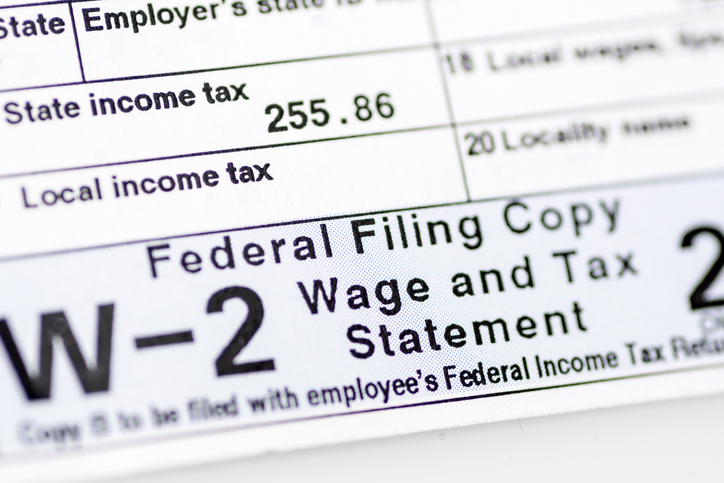W-2 Health Cost of Coverage Reporting
October 25, 2023
Background
The Affordable Care Act (ACA) requires employers to report the aggregate cost of “applicable employer-sponsored coverage” on an employee’s Form W-2 for the purpose of providing “useful and comparable consumer information to employees on the cost of their health care coverage.” This requirement is informational only and has no tax consequences and does not change or replace any other W-2 requirements. For this purpose, an employer must:
- Determine the applicable employer-sponsored coverage that is provided to each employee
- Calculate the aggregate cost of such coverage for each employee; and
- Report that cost on each employee’s Form W-2 using Box 12, code DD
Overview of Requirements
Who Must Report
All employers that provide “applicable employer-sponsored coverage” during a calendar year are subject to the reporting requirement—including federal, state, and local government entities, with some exceptions. The following employers are exempt from this reporting requirement:
- Under transition relief still in effect, small employers that filed fewer than 250 Form W-2s in the previous calendar year are not required to provide this information. (For example, if an employer filed fewer than 250 Forms W-2 for 2022, it is exempt from this requirement for 2023.)
- Multi-employer plans: Employers that contribute to a multi-employer plan are not required to report the cost of coverage unless reportable benefits are provided outside of the multi-employer plans.
- Federally recognized Indian tribal governments and tribally chartered corporations wholly owned by a federally recognized Indian tribal government.
- Plans maintained by the government primarily for members of the military and their families
Cost of Coverage
The cost must be reported on a calendar year basis (January 1 through December 31), regardless of the group plan year or renewal date. The “applicable cost” of coverage is the entire plan cost, including both the employer and employee contributions, regardless of whether the employee paid for that cost through pre-tax or after-tax contributions and whether the plan is self-funded or insured, grandfathered or nongrandfathered.
Applicable Coverage
In general, any group health coverage that is subject to COBRA is considered applicable employer-sponsored coverage, although some exceptions apply. The cost of coverage is not reduced by any imputed income included in the employee’s gross income (e.g., coverage for child dependents over the age of 27 or domestic partners).
Exceptions Certain benefits are specifically excluded from the reporting requirement. Benefits not required to be included in the W-2 reporting are: Health Reimbursement Arrangements (HRAs), including ICHRAs. QSEHRAs have other reporting obligations that are reported in Box 12 of Form W-2, using Code FF. Stand-alone dental or vision coverage that meets the HIPAA definition of an “excepted benefit.” Contributions to Health Savings Accounts (HSA.) All HSA contributions made through a cafeteria plan, even pre-tax salary reductions must still be reported in Box 12 of Form W-2, using code W. Long-term care insurance. Coverage only for a specified disease or illness, hospital indemnity or other fixed indemnity insurance provided that such coverage is not coordinated with the employer’s other health plans. Health FSAs. Special Rule: Employee salary reduction elections for health FSAs are excluded from the cost of coverage. But when an employer contributes to the health FSA (e.g., via optional employer flex credits), then this amount may need to be included if the amount of the employee’s health FSA for the plan year exceeds the employee’s salary reductions for that plan year.
Other Administrative Issues
IRS Notice 2012-9 provided guidance on several administrative issues.
- The W-2 requirement does not apply to payments or reimbursements of health insurance premiums for a 2% owner of an S corporation who is required to include the premium payments in gross income.
- Employers are not required to include the cost of coverage under an employee assistance program (EAP), wellness program, or on-site medical clinic if the employer does not charge a premium for these types of coverage provided under COBRA. However, if the employer charges a COBRA premium for any of these types of coverage, the cost of the plan must be included in the aggregate cost for all employees, not just those who have experienced a COBRA event.
- Employers may voluntarily include the cost of coverage under programs not required to be included under applicable interim relief, such as the cost of coverage under a Health Reimbursement Arrangement (HRA).
Penalties for Noncompliance
According to the IRS, reporting of the cost of coverage is informational in nature only and will not trigger any additional tax liability. We are not aware of penalties specifically tied to Box 12 reporting, but it is likely that the standard penalties that apply to Form W-2s for failing to report or for reporting incorrect information would apply. An employer that fails to include the required information on Form W-2 or who reports incorrect information should submit an amended return (Form W-2c) with the required/corrected information.
Summary
Additional reporting details are provided in the IRS employer W-2 filing instructions and in the following IRS resources:
- The IRS has published a chart that describes which benefits are subject to the W-2 reporting requirement. https://www.irs.gov/affordable-care-act/form-w-2-reporting-of-employer-sponsored-health-coverage
- Notice 2012-9 is available at http://www.irs.gov/pub/irs-drop/n-12-09.pdf
- The IRS has also posted a W-2 Q&A at: https://www.irs.gov/newsroom/employer-provided-health-coverage-informational-reporting-requirements-questions-and-answers
While every effort has been taken in compiling this information to ensure that its contents are totally accurate, neither the publisher nor the author can accept liability for any inaccuracies or changed circumstances of any information herein or for the consequences of any reliance placed upon it. This publication is distributed on the understanding that the publisher is not engaged in rendering legal, accounting or other professional advice or services. Readers should always seek professional advice before entering into any commitments.


